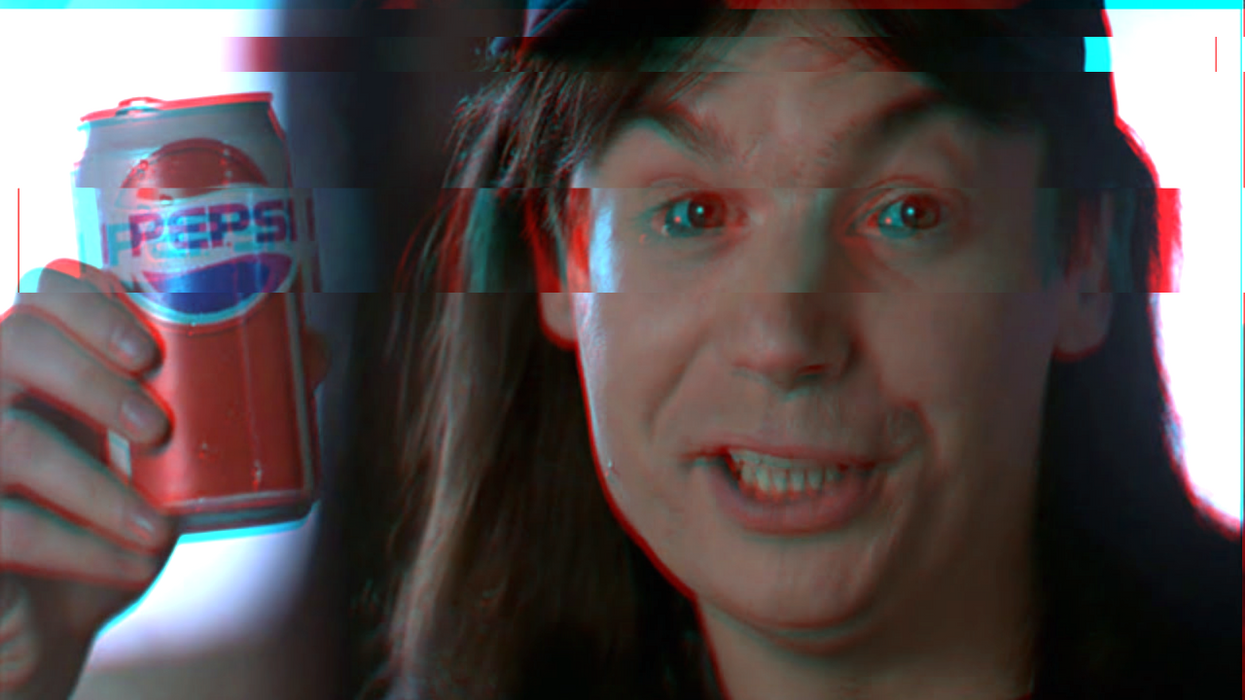Wait, Why Are We Adding Product Placements to Classic Films?
Movie studios are so desperate to make money, they're adding products to past films.

Product placement has been around since the dawn of cinema. The 1919 Buster Keaton film The Garage was sponsored by the gas and oil companies used in the movie, and we have seen companies like Nike, Pepsi, Apple, and Dr Pepper pay millions to have their products appear in movies and TV.
I mean, we all remember Spider-Man shooting his web at the Dr. Pepper can.
Product placement is popular, and it works... which is why companies are thinking about retroactively adding them to older movies. Like what if Citizen Kane's Rosebud weren't a sled, but a designer toboggan? Or if the champagne in Casablanca were Coors Light?
That might sound extreme, but companies are looking into ways to add things like billboards or even products on tables to older movies. The fact is, the total global product placement industry was said to be worth $20.6 billion in 2019 according to a report by data analysis firm PQ Media.
According to the BBC, advertising executives are contacting companies and trying to get them together with movie studios to add their products to movies, including past movies, where they will be digitally added. One such company doing this work is Mirriad.
Mirriad's chief executive Stephan Beringer expects such digital product placement to become widespread.
"We started out working in movies," he said in a statement. "Our chief scientist Philip McLauchlan, with his team, came up with the technology that won an Academy Award for the film Black Swan. The technology can 'read' an image, it understands the depth, the motion, the fabric, anything. So you can introduce new images that basically the human eye does not realize has been done after the fact, after the production."
This sounds wild, but it's an adjustment that's a long time coming. With people streaming more than ever and skipping commercials with services, studios and networks are trying their best to find a way to offset production costs and make lucrative advertising money, since their shows are able to reach a large array of global viewers.
And the technology is racing with the times. It's not just about adding older products, but about capturing who is watching, and having the ads and product placement change to your needs and wants.
This is like the dystopian part of Minority Report where Tom Cruise walks around a mall with someone else's eyes and sees different targeted ads.
But what about the artists? I don't want to watch North by Northwest and see him using a Verizon payphone. Or catch Kramer v. Kramer and see the father washing the son's hair with Johnson & Johnson shampoo.
Film critic Anne Billson says, "I would be interested in finding out about the legal angle vis-à-vis digital reworking of a copyrighted work, or whether the advertisers would have to buy the film before they tampered with it. It also calls into question the role of the production designer, who has put a lot of thought into the look of something, only for some random advertiser to come along at a later date and spoil it with changes or additions that might be anachronistic, or that might not mesh with their other carefully considered design choices."
There's a lot to unpack here, but this is happening.
We'll keep you updated with any Hollywood productions that choose to change older films.
Let us know what you think in the comments.
















